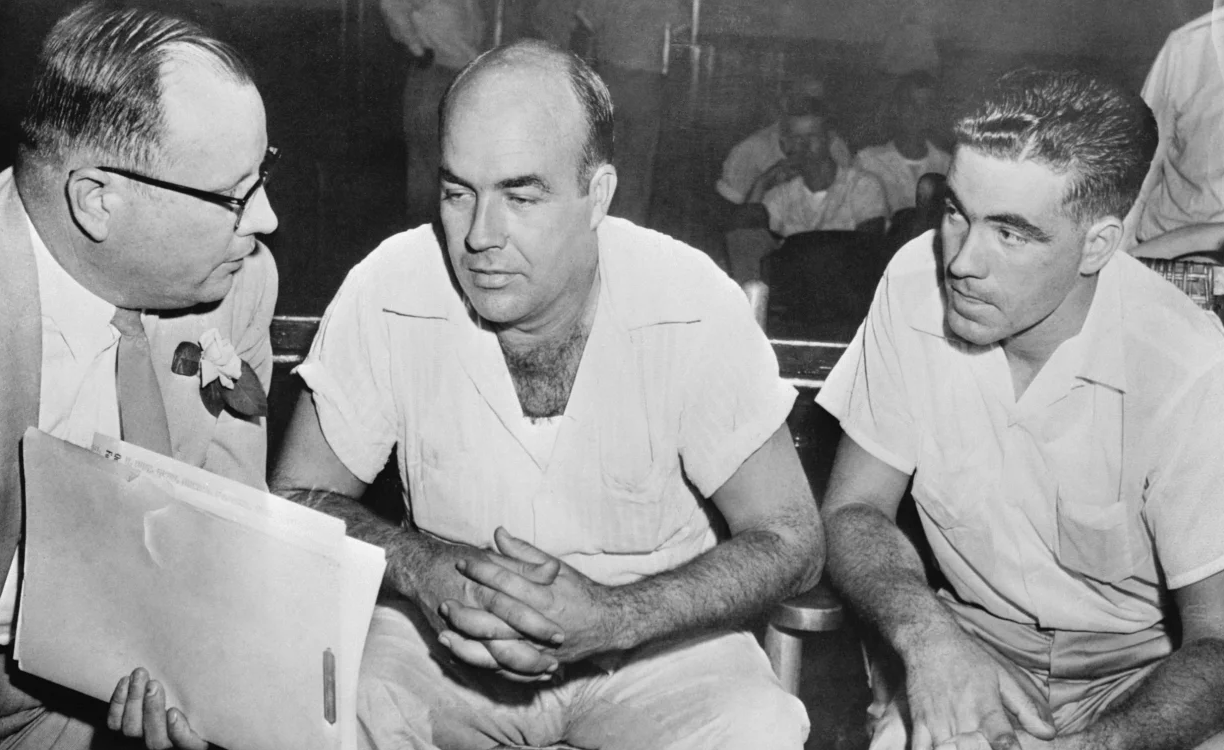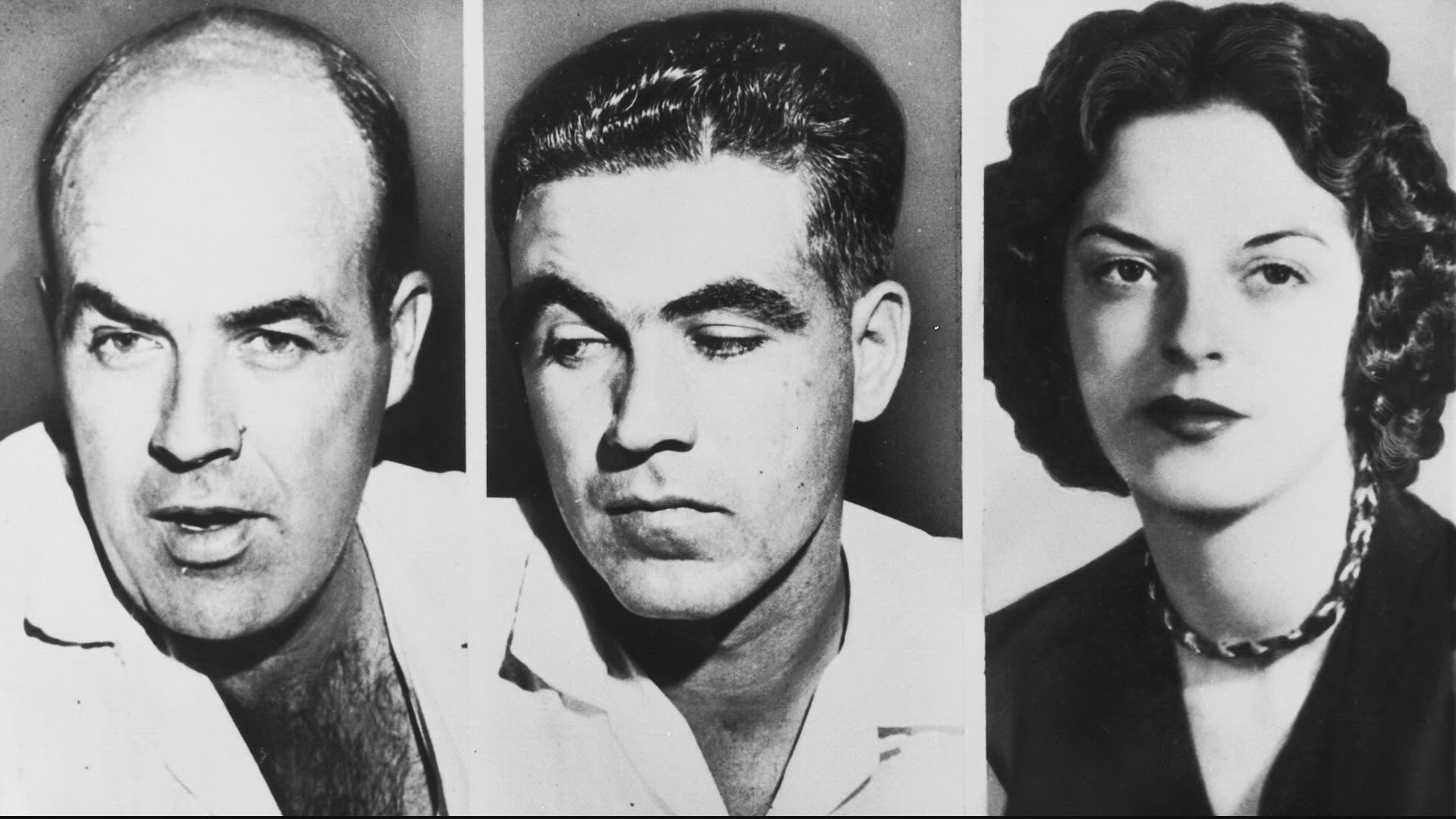Can a single, horrifying act of violence truly expose the deep-seated rot of racial injustice within a society? The brutal murder of Emmett Till in Mississippi in 1955 did precisely that, ripping open the facade of the Jim Crow South and revealing a landscape of hate, fear, and systemic oppression.
Emmett Till, a young black teenager from Chicago, was visiting relatives in Mississippi when his life was tragically cut short. The events that unfolded, and the subsequent trial, remain a stark reminder of the atrocities fueled by racism. Till's story, etched in the annals of American history, became a catalyst for change, forever altering the course of the Civil Rights Movement.
| Category | Details |
|---|---|
| Full Name | John William Milam |
| Born | December 24, 1921, Kosciusko, Mississippi |
| Died | December 30, 1980, Mississippi |
| Occupation | Farmer, Truck Driver |
| Known For | Involvement in the murder of Emmett Till |
| Relationship | Married to Juanita Milam |
| Associated with | Roy Bryant |
| Controversies | Murder, White Supremacy |
| Legal Status | Acquitted of murder charges; admitted guilt later |
| Major Events | Emmett Till Murder Trial, Confession to Look magazine |
| Key Quotes | "I'm no longer going to live with a nigger." |
| Legacy | Symbol of racial violence and injustice in America |
Reference: Encyclopedia Britannica - J.W. Milam
- Explore Fry99com Your Ultimate Guide To Success
- Subhashree Sahu Mms Controversy What You Need To Know
The initial spark that ignited the tragedy occurred at a store owned by Roy and Carolyn Bryant in Money, Mississippi. Emmett Till, while at the store with his cousins, allegedly had an interaction with Carolyn Bryant. While the details of this encounter remain contested, it set in motion a chain of events that would lead to unimaginable violence. It's been suggested that Till whistled at Carolyn.
In the early morning hours of August 28, 1955, Emmett Till was kidnapped from his great-uncle's home. His abductors, Roy Bryant and J.W. Milam, forced their way into the residence and took Till at gunpoint. Simeon Wright, Till's cousin, witnessed the abduction, a detail that would later become critical. The brutality that followed was horrific. Till was severely beaten, his eye gouged out, and ultimately, he was murdered. His body was then dumped in the Tallahatchie River.
The next day, the LeFlore County Sheriff, George Smith, arrested Roy Bryant for kidnapping. J.W. Milam was apprehended at a store in nearby Minter City. The nation watched with bated breath as the trial unfolded in September 1955. The courtroom in Sumner, Mississippi, was packed with observers, the majority of whom were white. The atmosphere was charged with tension and the palpable weight of racial prejudice.
- Shiloh Joliepitt A Life In The Spotlight Beyond See
- Explore Diva Flawless Onlyfans Content More Find Now
The prosecution presented a case built on eyewitness testimony and circumstantial evidence. Willie Reed's testimony, which placed the murder in Sunflower County, was crucial. Despite the compelling evidence, the all-white jury deliberated for just over an hour before acquitting Bryant and Milam of the murder charges. This verdict sent shockwaves across the nation, highlighting the blatant injustice and the deeply ingrained racism that permeated the legal system in the South. The trial, in many ways, was just the beginning of the turmoil for Bryant and Milam.
The aftermath of the trial saw the economic lives of Bryant and Milam suffer. Their stores, which catered almost exclusively to black patrons, were boycotted. Within fifteen months, all their businesses were either closed or sold. Furthermore, blacks refused to work on the Milam farm, further isolating them. The community, largely sympathetic to their actions before the trial, turned against them. They found themselves ostracized, their reputations irrevocably damaged. The trial, meant to be a triumph for their beliefs, instead brought them immense personal hardship.
In a shocking turn of events, J.W. Milam and Roy Bryant confessed to the murder of Emmett Till in a 1956 article published in Look magazine. This confession, though published after their acquittal, served as a confirmation of the truth the public had been demanding. However, the law prohibited a second trial for the same crime, thus shielding them from further legal repercussions. The confession, however, permanently stained their legacy and further fueled the outrage surrounding the case. The legal system, it appeared, had failed to deliver justice.
Emmett Till's murder and the subsequent trial became a galvanizing force for the Civil Rights Movement. His story, widely publicized in newspapers and magazines, served as a potent symbol of the injustices faced by African Americans in the South. His mother, Mamie Till-Mobley, made the courageous decision to have an open-casket funeral, allowing the world to see the brutal reality of the crime. This act of defiance further fueled the fire of the Civil Rights Movement, prompting a nation to confront the horrors of racial violence.
The legacy of Emmett Till extends far beyond the courtroom and the immediate aftermath of his murder. The Emmett Till Memorial Commission (ETMC) erected a sign in 2008 at the spot where Milam's shed once stood, where it's believed Till was beaten. This sign, as well as the various monuments and educational initiatives, is a testament to the enduring impact of his story, reminding us of the ongoing fight against racial injustice.
Carolyn Bryant, the woman at the center of the initial encounter, remained a complex figure in the narrative. Her statements, both during the trial and in later years, offered a glimpse into the events that led to the murder, although the specifics are subject to debate. In her original statement to defense lawyers, she stated that Emmett was brought to her. In 2005, she admitted that Roy Bryant, J.W. Milam, and Elmer Kimbell brought Emmett to her at the store in the middle of the night. Her role and recollections continue to be sources of discussion and controversy.
The investigation into the murder, and the subsequent trial, exposed the inherent racism within the legal system of Mississippi, and indeed, the entire South. The acquittal of Bryant and Milam, despite the overwhelming evidence, underscored the prevailing attitudes of white supremacy and the devaluation of black lives. The case highlighted the power of systemic prejudice and the challenges faced by African Americans seeking justice in a society deeply entrenched in racial inequality.
The impact of the trial and the murder also extended to the social and economic realms. After the trial, Roy Bryant and J.W. Milam faced significant personal and professional setbacks. Their businesses were boycotted, and they lost the support of their community. The trial, meant to be a vindication of their views, became a symbol of their shame and isolation. The economic repercussions, coupled with the moral outrage, further underscored the profound impact of the case.
The case remains a potent reminder of the dangers of racial hatred and the importance of justice. It serves as a call to action, urging us to confront the persistent inequalities that continue to plague our society. The story of Emmett Till compels us to remain vigilant in the fight for equality and to never forget the lessons of the past.
The brutality inflicted on Emmett Till and the subsequent injustice of the legal system prompted a wave of social upheaval and protests. The civil rights movement gained momentum, drawing inspiration from Till's tragic death. His story became a rallying cry, igniting the fight for equal rights and the abolition of segregation. The courage of his family, particularly his mother, fueled the movement and inspired countless others to speak out against injustice.
The events surrounding the murder of Emmett Till also serve as a cautionary tale, a reminder of the destructive power of prejudice and the importance of empathy. The dehumanization of others, driven by racial biases, can lead to unspeakable acts of violence. Till's story compels us to examine our own biases and to actively combat the insidious effects of racism in all its forms. It emphasizes the need for education, understanding, and a commitment to social justice.
The location in Money, Mississippi, where the initial interaction occurred, has become a site of remembrance. The store owned by Roy and Carolyn Bryant, the location of the abduction, the site where his body was recovered, all serve as somber memorials to the tragedy. These locations, along with the various memorials and historical markers, stand as constant reminders of the events that unfolded and the need to never forget the lessons learned from the past.
The story of Emmett Till remains as relevant today as it was in 1955. His murder, and the failure of the justice system to hold his killers accountable, continues to resonate in contemporary discussions about race, justice, and inequality. The case underscores the need for ongoing efforts to combat racial discrimination and to ensure that all members of society are treated with dignity and respect. Tills sacrifice, though a tragedy, has left an indelible mark on American society, challenging us to create a more just and equitable world.
J.W. Milam's confession to the murder in a 1956 magazine article, while offering closure for some, also highlighted the limitations of the justice system. Though he and Bryant had confessed, the law at the time offered them immunity from further prosecution. This lack of accountability further amplified the sense of injustice and underscored the urgent need for legal reforms. The case galvanized support for civil rights legislation and ultimately contributed to landmark decisions aimed at dismantling segregation and promoting equal rights.
The trial, though it resulted in an acquittal, served as a pivotal moment in the fight against racial injustice. It exposed the brutality of racial prejudice and the failure of the legal system to protect black citizens. The case served as a catalyst, prompting widespread protests, inspiring the civil rights movement, and ultimately helping to bring about significant changes in American society. The story of Emmett Till continues to inspire hope and determination in the ongoing fight for equality and justice.
The life and death of Emmett Till are a stark reminder that we must constantly strive to live up to the ideals of justice and equality. The story, though painful, is a testament to the resilience of the human spirit and the enduring power of hope. His legacy compels us to fight for a society where every individual is treated with respect and dignity, regardless of race or any other characteristic. Remembering Emmett Till is not merely about remembering a tragic past; it is about shaping a more just future.
The case also highlights the importance of confronting historical truths, however difficult they may be. The events surrounding Emmett Tills murder underscore the need for a critical examination of our past, even the most painful chapters. Facing up to the brutal realities of racial violence and systemic oppression is crucial for learning from the past and preventing such atrocities from happening again. The story of Emmett Till is a constant reminder of the price of silence and inaction in the face of injustice.
- Odia Viral Mms Trends Risks Insights What You Need To Know
- Unveiling Sone 385 Hikaru Nagi A Captivating Journey


